|
|
|
 |
 |
 |
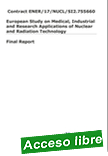 |
European study on medical, industrial and research applications of nuclear and radiation technology
European Commission – Energy
Since their discovery over a century ago, ionizing radiation (IR) technologies have become key tools to explore matter and biological building blocks. One of the most important discoveries of the 20th century — the structure of DNA — was the result of analysing its X-ray diffraction pattern. Over the years, health has become one of the most important non-energy applications to use IR, including imaging and therapy.
|
IR is also used in many industrial domains, ranging from sterilization and disinfection to security-control systems, and from non-destructive testing to environmental applications. Nanotechnologies, nanoelectronics, photonics, advanced materials, biotechnologies and advanced manufacturing also use IR tools. Not only do these technologies generate high revenues by themselves, they also generate highly skilled innovation-oriented jobs, confer added value to products and services in which they are embedded and prompt other technological developments. Europe hosts a substantial infrastructure of facilities dedicated to fundamental or applied IR research, a broad network of advanced universities and research centres, as well as world-class industrial corporations and innovative SMEs competing at the global level. Such assets should be sustained and developed, alongside its most promising applications, while ensuring the highest level of safety and radiation protection. This report provides up-to-date information on the non-power applications of nuclear and radiation technology in the EU with the view of identifying their key societal benefits and development perspectives. The report proposes a series of actions in this area aimed at contributing to the European citizens’ health and to the European economy, competitiveness, jobs and growth.
|
 |
 |
Is Blockchain in Energy Driving an Evolution or a Revolution ?
World Energy Council, October 2018, 38 p.
The use of blockchain technology within the energy sector (“energy blockchain”) is emerging as a key strategy and focus area for modernisation of the industry. As a distributed ledger technology (DLT), blockchain provides a platform for the management and transaction of high-value data. Unlike other DLTs, however, blockchain is “trustless”1, requiring no intermediaries and, thus, it brings the potential to catalyse the existing business processes as well as a reduction of the overhead costs and level of complexity embedded in the current energy ecosystem.
|
Utilising blockchain technology to optimise the existing practices of the energy sector through
asset traceability applications and other behind-the-scenes technology upgrades are obvious choices for the energy sector. It will not be surprising to see such applications appear soon on the horizon.
The open question about blockchain is, can it revolutionise the way residential consumers consume and receive electricity?
The intent of this anthology is to showcase what the different companies and participants engaging with emerging blockchain technology are aiming for and what progress has been made to date with their applications. We can also leverage their insights to gauge blockchain’s impact on the sector.
|
 |
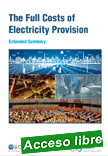 |
The Full Costs of Electricity Provision - Extended Summary
Nuclear Energy Agency (NEA), 29/10/18, 28 p.
Electricity provision touches upon every facet of life in OECD and non-OECD countries alike, and choosing how this electricity is generated ? whether from fossil fuels, nuclear energy or renewables ? affects not only economic outcomes but individual and social well-being in the broader sense. Research on the overall costs of electricity is an ongoing effort, as only certain costs of electricity provision are perceived directly by producers and consumers.
|
Other costs, such as the health impacts of air pollution, damage from climate change or the effects on the electricity system of small-scale variable production are not reflected in market prices and thus diminish well-being in unaccounted for ways.
Accounting for these social costs in order to establish the full costs of electricity provision is difficult, yet such costs are too important to be disregarded in the context of the energy transitions currently under way in OECD and NEA countries. This report draws on evidence from a large number of studies concerning the social costs of electricity and identifies proven instruments for internalising them so as to improve overall welfare.
The results outlined in the report should lead to new and more comprehensive research on the full costs of electricity, which in turn would allow policy makers and the public to make better informed decisions along the path towards fully sustainable electricity systems.
|
 |
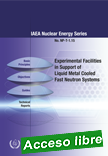 |
Experimental Facilities in Support of Liquid Metal Cooled Fast Neutron Systems
IAEA Nuclear Energy Series, 2018, 52 p.
This publication presents both an overview and detailed information on more than 150 experimental facilities being used for developing and deploying innovative liquid metal-cooled (sodium, lead and lead-bismuth) fast neutron systems, both critical and subcritical. Facilities, both under construction and those in operation are considered. It is expected that by providing the end users with detailed information on existing and future experimental facilities able to support innovative liquid metal cooled fast neutron systems, the publication will facilitate cooperation between organizations and knowledge transfer. |
An overview of the existing and future experimental facilities is presented in the body text of this publication. The profiles of all facilities in the form of individual papers are available on the attached CD-ROM and in the related on-line database maintained by the IAEA Catalogue of Facilities in Support of Liquid Metal-cooled Fast Neutron Systems (LMFNS Catalogue).
|
 |
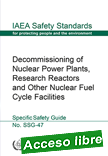 |
Decommissioning of Nuclear Power Plants, Research Reactors and Other Nuclear Fuel Cycle Facilities - Specific Safety Guide
IAEA Safety Standards Series, 2018, 99 p.
Decommissioning is the last step in the lifetime management of an authorized facility and it must be considered during the design, construction, commissioning and operation of such facilities. This publication provides guidance on how to comply with requirements for the safe decommissioning of nuclear power plants, research reactors, and other nuclear fuel cycle facilities. |
It addresses all the aspects of decommissioning that are required to ensure safety including: roles and responsibilities, strategy and planning for decommissioning, conduct of decommissioning actions and completion of decommissioning. It is intended for use by those working in policy and strategy development, planning, implementation and regulatory control of decommissioning.
|
 |
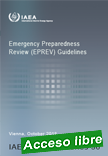 |
Emergency Preparedness Review (EPREV) Guidelines
IAEA Services Series, 2018, 106 p.
The purpose of these guidelines is to provide a systematic and consistent methodology for conducting all activities associated with the EPREV service. The intended audience consists of:
— Prospective and actual Review Team members, for the preparation and conduct of the missions;
— Prospective and actual Host States, to clarify expectations and allow a smooth preparation and conduct of an EPREV mission and follow-up actions;
|
— Member States interested in IAEA’s peer review and advisory services in the area of EPR.
|
 |
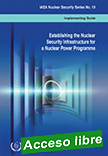 |
Establecimiento de la Infraestructura de Seguridad Física Nuclear para
un Programa Nucleoeléctrico
Colección de Seguridad Física Nuclear del OIEA, 2018, 108 p.
El objetivo de la presente Guía de Aplicación es dar orientaciones sobre las acciones que debería llevar a cabo un Estado para establecer una infraestructura de seguridad física nuclear eficaz para un programa nucleoeléctrico.
A los Estados que no tengan intención de iniciar un programa nucleoeléctrico, o que ya tengan un programa nucleoeléctrico establecido, les resultarán útiles las acciones recogidas en esta Guía de Aplicación cuando evalúen y/o establezcan la infraestructura de seguridad física nuclear nacional para las actividades relacionadas con materiales nucleares y otros materiales radiactivos, |
las instalaciones conexas y las actividades conexas, así como para tratar con eficacia materiales nucleares y otros materiales radiactivos no sometidos a control reglamentario.
|
 |
 |
Preparation, Conduct and Evaluation of Exercises to Test Security Contingency Plans at Nuclear Facilities
IAEA Non-serial Publications, 2018, 90 p.
The purpose of this publication is to provide practical guidance for facility operators to efficiently and effectively prepare, conduct and evaluate security contingency response exercises.2 The competent authority responsible for creation of the State’s contingency response exercises could also use this publication to prepare, conduct and evaluate State-level contingency response exercises.
|
|
 |
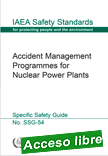 |
Accident Management Programmes for Nuclear Power Plants
IAEA Safety Standards Series No. SSG-54
Accident management is an essential component of nuclear power plant safety and this Safety Guide provides recommendations on how to establish and maintain an effective accident management programme. Included in the publication are sections covering topics such as the identification of plant vulnerabilities and capabilities, development strategies, verification and validation, training and interfaces with emergency preparedness and response.
|
Compared to the 2009 version, this publication enhances recommendations related to the instrumentation that would be used during accident management and includes a new chapter on the execution of the accident management programme.
|
 |
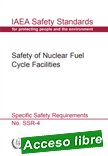 |
Safety of Nuclear Fuel Cycle Facilities
IAEA Safety Standards Series No. SSR-4
This Safety Requirements publication establishes a basis for safety and for safety assessment at all stages in the lifetime of nuclear fuel cycle facilities. A broad scope of requirements is established for site evaluation, design, construction, commissioning, operation and preparation for decommissioning that must be satisfied to ensure safety. These requirements apply to facilities for conversion, enrichment, nuclear fuel production, storage of fresh and spent fuels, reprocessing, preparation for disposal and associated research and development facilities.
|
|
 |
| |
|
|

|
|
|
| |
|
|
| |
| |
|
|
| |
| |
|
|
| |
| |
|
|
|
|
|
|
|
